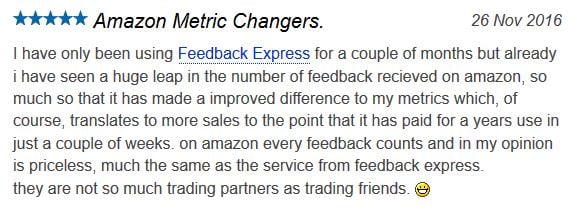Every Amazon seller knows it’s absolutely crucial to have positive feedback because that means you’re efficiently attending to your customers’ needs. You’re a good seller that offers quality products, ships them on time and responds to any concerns, requests or complaints. But FeedbackExpress has uncovered another reason why good Amazon seller feedback is so important — it’s one of the top things Amazon looks for when awarding a Buy Box. If you’ve ever wondered about how Amazon goes about their secret formula with Buy Boxes, read on to learn what you have to do to score one.
1. Give Your Customers Nothing to Complain About
In a perfect world, you’d sell your wares on Amazon and your buyers will use them happily without a second thought. Even though you may encounter some kinks or stumbles in this ideal world, your customers would understand that life happens; if it’s not a huge deal — which it wouldn’t be in this world — then they won’t make a huge deal about it the way most people wouldn’t if the cashier counted back the wrong change to them.
Unfortunately, we don’t live in this perfect world and Amazon, as much as it’s a microcosm of the planet, is susceptible to this, too. It’s inevitable that a problem will crop up but it’s how you prepare and react to these problems that will give your buyers nothing to complain about.
For instance, say the package is late or arrives damaged. You would obviously prefer that this didn’t happen, but still, you can turn this to a positive by responding well to it. Contact your buyer and let them know what’s happening, offering something in return to offset the balance or ship them an undamaged product (for free, possibly). At the very least, your consumers expect excellent communication; going further can ensure you get the feedback that’s so necessary to landing the Buy Box.
2. Keep Track of the Points You Accumulate or Lose
Every time you make a sale and process an order, you’re ranked by Amazon in how well, fast and efficiently you get it out. Ship it within the time frame you listed, undamaged, with no cancellation and a positive feedback, and you’ll receive a perfect score of 100. If there’s a problem with lateness, then Amazon can reduce that score to zero.
If the problems become more serious, then Amazon will actually dock points from you. If your product order is cancelled, for whatever reason, the online marketplace will assign you a score of -100. Err even worse, and the scoring becomes hard to stomach, such as if you’ve got negative feedback — that’ll result in a score of -500 assigned for that order.
There’s a bit of good news when it comes to the bad side of a negative score. Amazon won’t aggregate all the negative scores you received on the same order, just the most negative one. So if you happened to get a fulfilled order go really, really wrong and messed up in all areas, it’s only the worst one that’ll count as opposed to all the negative scores tallied together.
3. Last Ordered, First Remembered
The good news is, Amazon, unlike auto insurance and criminal records, has a short memory when it comes to your scores. If you’ve broke out of the gate in an unfavourable way, then you’ve got plenty of opportunities to redeem yourself.
Amazon will only factor in scores from orders placed within the last calendar year (365 days), and they’ll place a premium on orders filled within the last three months (90 days).
So remember: you’ve always got second chances on the horizon for upping your score, provided you didn’t alienate your customers so much they’ve started looking elsewhere en masse.
4. Keep Tabs on Your Seller Rating
If you go into your Amazon account, you’ll be able to see the score, as a percentage, that Amazon has assigned to you. The highest you can get is 100%, and being in the 98-100% range will give you the best chances of landing a Buy Box.
From there, Amazon jumps around a bit in terms of categories and percentages. For example, the second-highest category contains scores between 95-97%, while underneath that is 90-94%. After that, it’s as follows: 80-89%, 70-79%, sub-70%.
Another thing to keep in mind is how Amazon weighs your improvements. If you gain a percentage point in the same category, it’s good, but not as great as if you’d gained that same percentage point into the next category.
For example, clearing the 70% threshold will hold you in better stead than simply going from 69% to 70%.
Interested in saving time and increase your positive feedback on Amazon?

Join thousands of happy sellers like the one above by signing up for your FREE 14 day trial of FeedbackExpress, Amazon feedback software.



